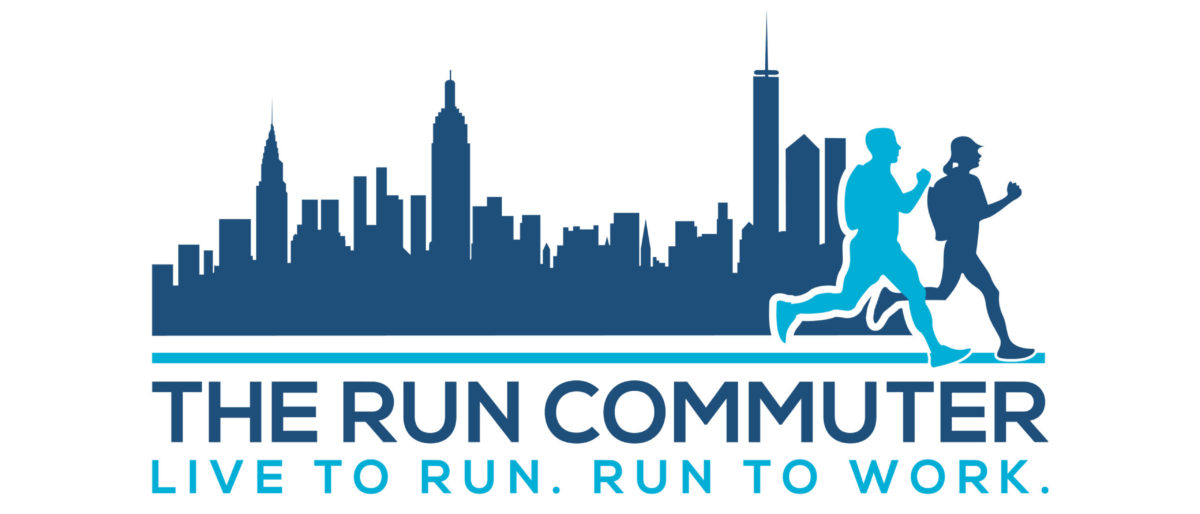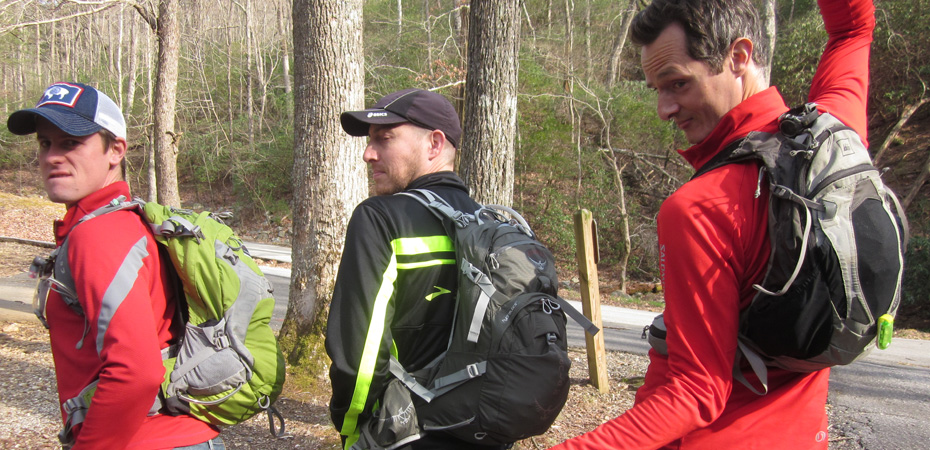Though we use them nearly daily on roads, our run commute packs are all designed for trails, for hikers, through-hikers, fastpackers. One can see in our reviews how well they serve their purposes and meet our run commuting needs; however, perhaps readers still wonder about their comfort and ability during those 3-6 mile runs. How about 65 miles in varied temps, wind, and sun? We are now able to offer better perspective on said service, after humping these packs over several mountains, for 20 hours, during the inaugural Georgia Death Race.
[fusion_builder_container hundred_percent=”yes” overflow=”visible”][fusion_builder_row][fusion_builder_column type=”1_1″ background_position=”left top” background_color=”” border_size=”” border_color=”” border_style=”solid” spacing=”yes” background_image=”” background_repeat=”no-repeat” padding=”” margin_top=”0px” margin_bottom=”0px” class=”” id=”” animation_type=”” animation_speed=”0.3″ animation_direction=”left” hide_on_mobile=”no” center_content=”no” min_height=”none”]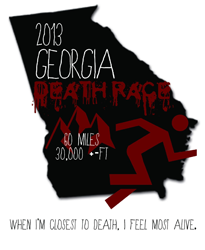
Hall, Josh, and Kyle lit out from Atlanta with crew chief Laura on Friday, March 15, to tackle this course up in the north Georgia mountains. We had all run ultras before; however, this one would be twice as far as the 50Ks we’d done, with 30,000 feet of elevation change: it was no joke.
The race was first billed as 55 miles; then 60-ish; but it turned out to be closer to 65 miles, and temperature fluctuations between elevations (sometimes 20°F difference, with wind and shade) would make for an extremely challenging race. The race began at 4 a.m. Saturday, March 16, and was open for 28 hours, allowing everyone some chance to finish. We’ll get up a race report if you want it, but for now we want to offer insight as to the run commuting/ultramarathon connection.
One: up to 50 percent of our training miles came from running to work, or from it. The remainder came from long road runs, hill and stair training, shorter ultras, and mountain training weekends.
Two: racers had a mandatory gear list to carry during the race. Part of it was due to the backcountry requirements of Vogel State Park and the U.S. Forest Service; and the rest was deemed necessary in case of injury; or if you could no longer run/walk/hobble, and were too far from an aid station. Here’s the list:
Mandatory:
-
1 Space blanket
-
1 Thermal top
-
1 Warm hat (beanie)
-
1 Pair of warm gloves
-
1 Waterproof jacket (poncho not acceptable)
-
1 Whistle
-
1 Map (provided)
-
1 22 oz (or greater) capacity for water.
-
1 Food ration
Recommended:
-
1 Working cell phone
-
1 Extra set of batteries for your head lamp
-
1 Thermal bottom
[/fusion_builder_column][fusion_builder_column type=”1_1″ background_position=”left top” background_color=”” border_size=”” border_color=”” border_style=”solid” spacing=”yes” background_image=”” background_repeat=”no-repeat” padding=”” margin_top=”0px” margin_bottom=”0px” class=”” id=”” animation_type=”” animation_speed=”0.3″ animation_direction=”left” hide_on_mobile=”no” center_content=”no” min_height=”none”]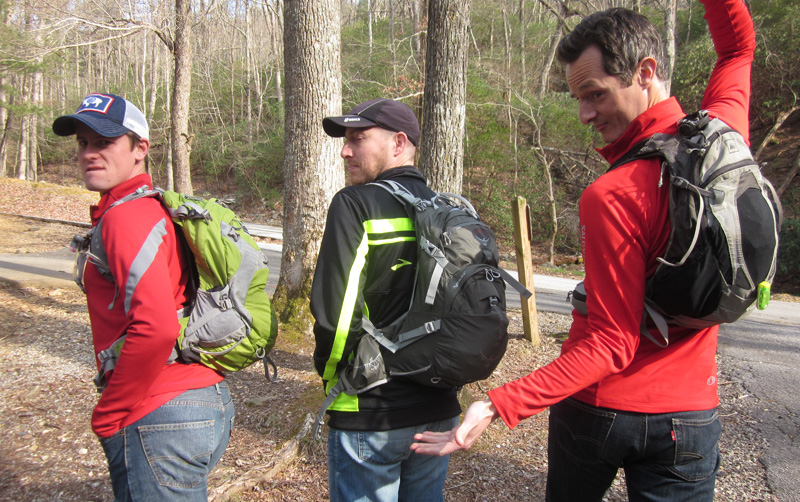
And, three, while a lot of ultramarathoners wear hydration packs, like the Nathan Endurance Race Vest, Salomon Advanced Skin S-Lab 5, or the increasingly-popular UltrAspire Omega Hydration Vest, we would need to carry more than just water and gels for this race. But owing to our run commuting, we were already accustomed to running with full backpacks.
Would packs we use for run commuting perform well during this race? Here are our thoughts, in brief:
Tester: Josh
Pack: Osprey Manta 20
Comfort: None of the straps chafed at all. I normally wear a short or long-sleeve compression shirt to reduce any possibility of chafing (usually underarms, or around my waist). With the Manta 20, however, the straps were adequately padded, positioned properly, and secured with non-irritating buckles, making it fantastic no matter what clothing was underneath. The weight of the pack was distributed very well, too.
Storage: With 17L (1,037 cu. in.) of internal storage, I had plenty of room for all the required gear, plus changes of socks and shirts, with additional space leftover. There are many outside pockets that are easily accessible as well, including dual waist strap pouches. These were perfect for gels, Clif bars, and other snacks. I could grab them on the fly, eat, and continue running without stopping.
Hydration: A unique 3L hydration bladder was standard on the S/M model. This was more than enough to supply adequate hydration from one aid station to another.
User Notes: I love everything about this pack. In fact, I would choose this over my previous favorite, the Osprey Stratos 24. The hydration system features were ridiculously handy, the pack was super-comfortable, and I felt like if I were to changeover to another crazy sport – fastpacking, for instance – it would be a fantastic piece of gear for the job. I can’t say enough good things about the Manta 20. Seriously.
[/fusion_builder_column][fusion_builder_column type=”1_1″ background_position=”left top” background_color=”” border_size=”” border_color=”” border_style=”solid” spacing=”yes” background_image=”” background_repeat=”no-repeat” padding=”” margin_top=”0px” margin_bottom=”0px” class=”” id=”” animation_type=”” animation_speed=”0.3″ animation_direction=”left” hide_on_mobile=”no” center_content=”no” min_height=”none”]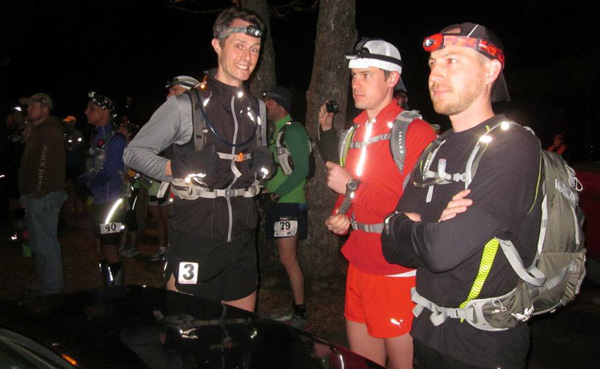
Tester: Hall
Pack: Osprey Stratos 24
Comfort: Starting at 2lbs without any gear, or even a hydration bladder, this backpack was surprisingly comfortable over the 44 miles I covered before my eventual exit from the race (see Editor’s Note below). Due to a former injury, a broken collar bone to be exact, I am always wary of carrying anything on my shoulders for long periods of time. Especially with standard backpack straps. But the Osprey Stratos 24’s numerous options for cinching down the straps prevented any irritation. The large amount of straps and different ways to secure the gear and prevent any shifting or unnecessary movement helped keep it quiet as well. Once the temperatures warmed up and the sun rose above the North Georgia mountains, the stretched mesh back panel allowed my back to breathe.
Storage: At times I lost track of where certain items were in my pack due to the plethora of harness pockets, hipbelt pockets, and other compartments. It’s a good problem to have, and though I ended up having to wash out some of them due to carrying used gel packets, I was glad to be able to have most of what I needed constantly accessible.
Hydration: My Osprey Hydraulics 2 Liter Reservoir was a great purchase. The handle and rigid structure didn’t add much weight, but certainly made it a lot easier to fill at aid stations and even at home under the sink.
Editor’s Note: Hall neglected to mention that his reason for exiting the race at mile 44 was that his tendons were about to ‘splode. This is for real. He’d just finished a course of antibiotics, amongst the serious warnings for which was listed severe likelihood of tendons rupturing from exercise and strain. But from mile 44, without missing a beat or dropping a smile, Hall became crew lieutenant, and we were joyed to see him with Laura at the final crew station, and again at the finish! –KT
[/fusion_builder_column][fusion_builder_column type=”1_1″ background_position=”left top” background_color=”” border_size=”” border_color=”” border_style=”solid” spacing=”yes” background_image=”” background_repeat=”no-repeat” padding=”” margin_top=”0px” margin_bottom=”0px” class=”” id=”” animation_type=”” animation_speed=”0.3″ animation_direction=”left” hide_on_mobile=”no” center_content=”no” min_height=”none”]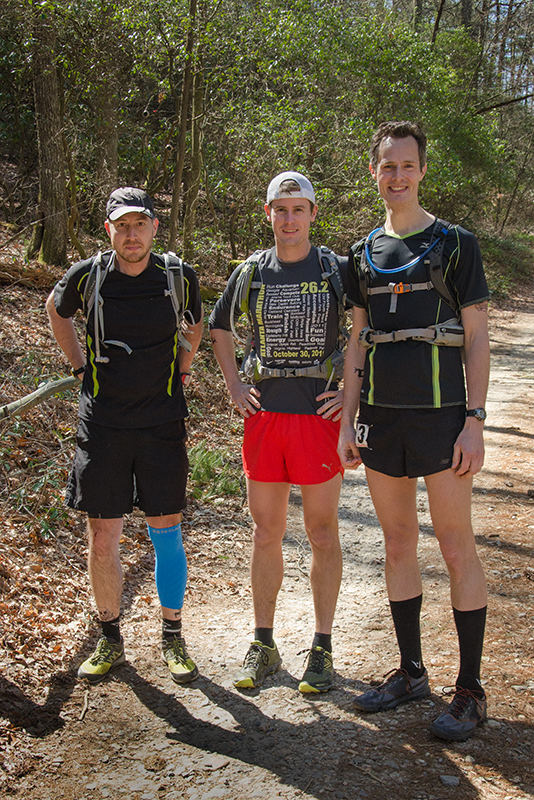
Tester: Kyle
Pack: REI Stoke 19
Comfort: As mentioned in my previous review, the Stoke 19 lacks any kind of ventilation for your back. Lack of air flow yields plenty of sweat, and mid-race my shorts had an inch-wide salt band; however, my pack remained wonderfully cushy, and all the straps are wide and plush, so nothing cuts or saws into your torso. From the chilly morning to the mid-day roasting sun, I experienced no discomfort. I had one small chafe spot when I took stock of my ravaged body the next day: the right shoulder strap rubbed my collar bone, but that almost certainly owes to said clavicle’s odd shape.
Storage: So many pockets, filled with GUs, Clif bars, at one point an entire sweet potato. There was ample room for my required gear (and a safety whistle is built into the chest strap) and leftover space for fuel, though never did anything feel unsecured: all remained perfectly in place. The race offered a $100 bonus to whomever brought in the most trash from the trail; we retrieved multiple wrappers, spent GU packets, some beer cans, and more, and mashed them all into my pack’s side pockets. (The bonus went to a guy who dropped off at an aid station a 12-pack box he stuffed with garbage, and a freaking car tire, with which he’d run two miles — while then in third place: well-earned.)
Hydration: I’ve been using a Camelbak Omega 100oz. bladder for years now. By about mile 20, the hook by which it is secured at its top had twisted off, but, like I said: years old, so some failure is to be expected. It stayed put despite this. It was difficult getting the full bladder back into the Stoke 19 with all my gear inside. Often, I would have to pull it all out, slide the bladder back in place, then replace my gear inside.
User Notes: The Stoke 19’s biggest drawback was the difficulty replacing the bladder, and subsequently the time necessary to do so. Speaking with someone before the race about her Ultimate Direction SJ Race Vest, which in lieu of a bladder touts twin 22-ounce bottles, holstered on the shoulder straps. It was, she said, “the difference between a 30-second aid station stop and three minutes.” That was a prescient statement, I came to find. But the Stoke 19 allows you to maintain a higher center of gravity. Look again at the photo of the three of us above: note that mine (on the right) rides much higher and tighter than do Josh’s or Hall’s. That was on the trail, as it is on my run commute, an asset.
[/fusion_builder_column][/fusion_builder_row][/fusion_builder_container]
